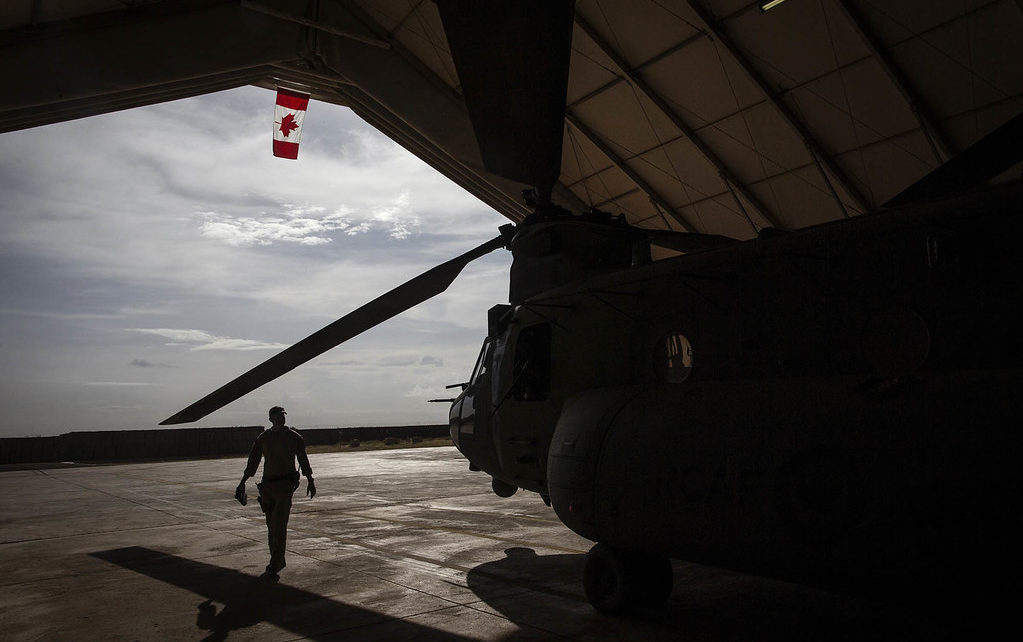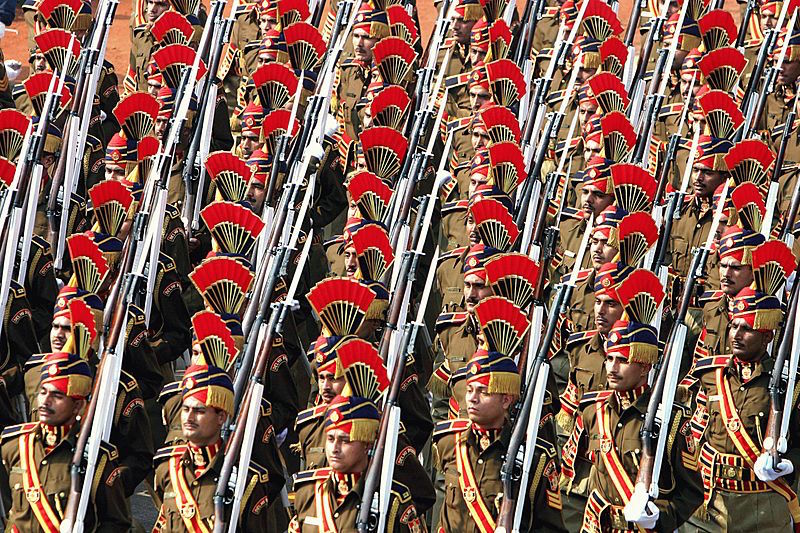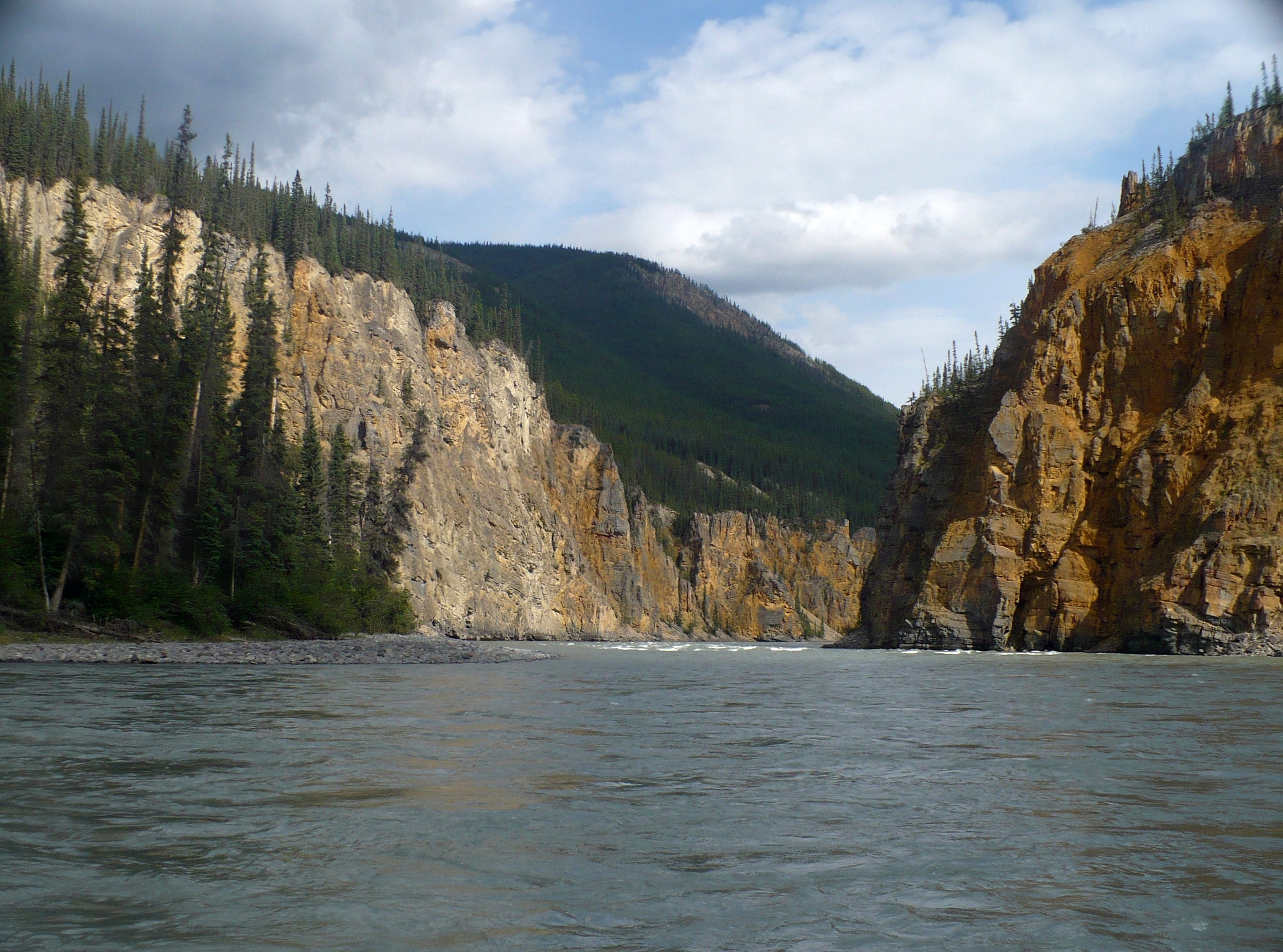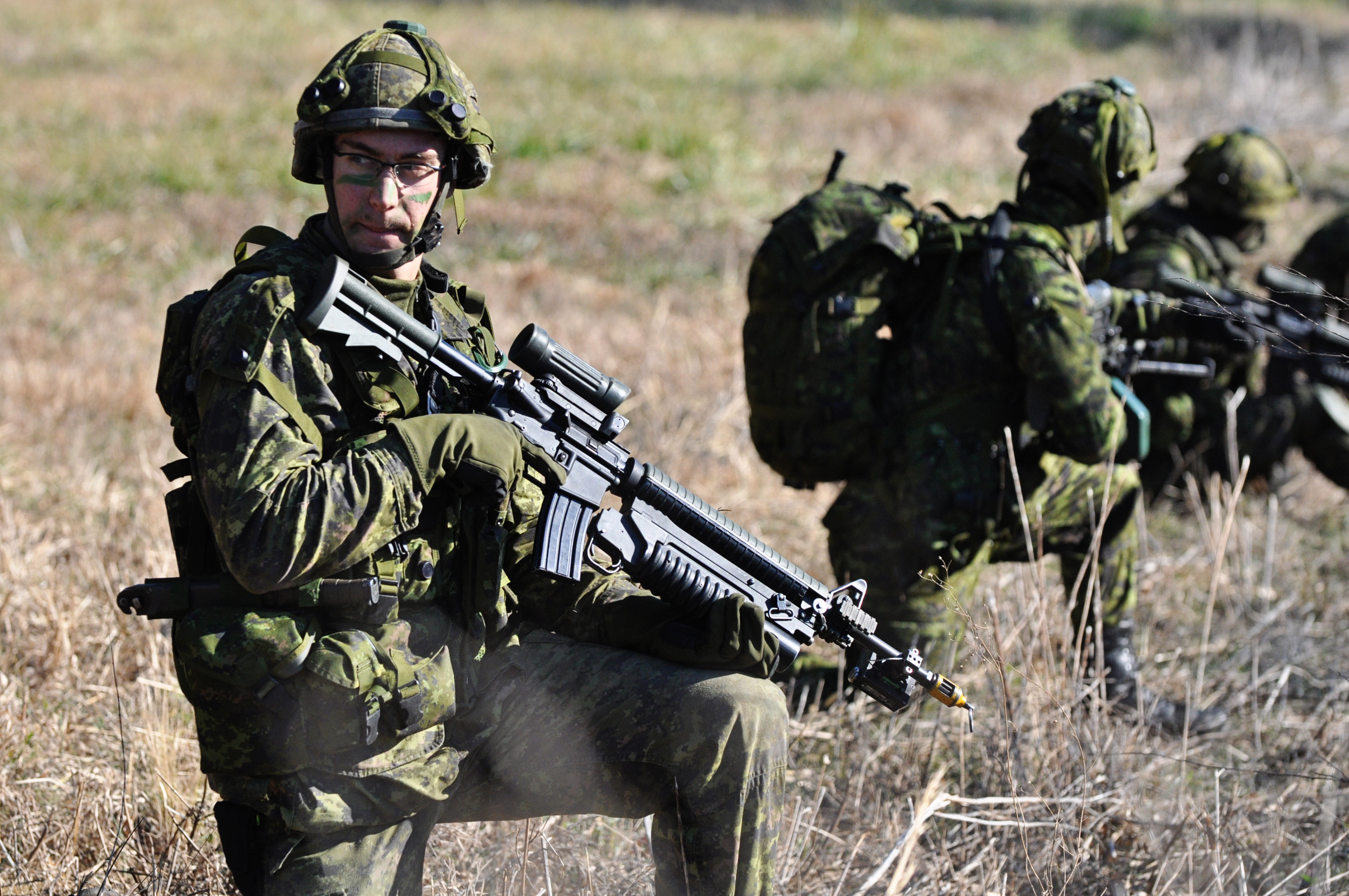As a decades-long uptick in days with temperatures of 50 degrees Celsius attests, the planet is trending hotter. The thermal conductivity—“[a] parameter used as a measure of how well a material conducts heat”—of natural and especially urban spaces will continue to increase in step. Over roughly the next 80 years, some forecast, the typical urban space might become 4.4 degrees Celsius hotter than at present. A super-heated world could lead to a bump in the number of days on which sun-baked surfaces become capable of searing skin. The potential spike in contact burns, which arise from “prolonged transfer of heat from an object to the skin,” could hinder the ability of the Canadian Armed Forces (CAF) to manoeuvre safely and efficiently in certain environments.
Subjecting human skin to sufficiently high temperatures triggers pain and inflicts a contact burn. Specifically, studies indicate that epidermal pain presents at approximately 43 degrees Celsius (among adults), while “superficial burns” happen at 44 degrees Celsius. By extension, higher temperatures decrease the exposure interval needed to burn as well as intensify burn severity.
Because metal and concrete, the sinews of cities, excel at trapping and emanating the sun’s rays, even mild temperatures can prove harmful to human skin. A study undertaken in Adelaide, Australia found that a clear, summer day with a temperature of just over 26 degrees Celsius heated exposed metal and asphalt to a skin-burning 60 degrees Celsius and 54.5 degree Celsius, respectively. Temperatures over 43 degrees Celsius, along with cloud-free conditions, drove those same surface temperatures to a searing 71.5 degrees Celsius and 68.5 degrees Celsius, respectively.
Consequently, everyday items become iron-hot on warm days. A soldier in the Loyal Edmonton Regiment recalled of Afghanistan: “Bottles of water left in the sun would get so hot you can make tea, and any metal surface was impossible to touch without gloves on.” A CAF member serving on the sun-baked tarmacs of an undisclosed southwest Asian destination likewise complained of burn-inducing airplanes and tools.
Probably few of those singed by civilian objects or military equipment would need intensive care. In 2013, 503 Canadian civilians sought hospital treatment for “contact burns from hot objects.” Such injuries seem to have presented as relatively mild; in fact, nearly three-quarters of these patients did not merit hospitalization. If American data are indicative, then the same trend would likely hold for Canadian soldiers. Of those personnel seeking treatment at the U.S. Army Institute of Surgical Research for non-combat burns inflicted during over five years (March 2003-June 2008) of operations in Iraq and Afghanistan, none indicated contact burns and perhaps the closet analogue, “scalds,” represented only 3 per cent of cases.
These figures, though, do not mean that contact burns constitute a negligible problem for the CAF. Even minor burns affect well-being: “First-degree or very superficial partial-thickness burns may damage only the outer lays of the skin (the epidermis) but they cause mild pain and discomfort, especially when something such as clothing rubs against the burned area.” It stands to reason, then, that a painful contact burn could hinder a victim’s range of motion, including their ability to wield a firearm—a significant liability in combat.
The CAF has few options for dealing with contact burns. Infrastructural investments, such as emerging heat-deflecting “cool pavements,” capable of decreasing the incidence and disruptive potential of contact burns might be unavailable, particularly since the CAF has deployed to some of the places the least prepared for climate change, at least according to the Notre Dame Global Adaptation Initiative (ND-GAIN), which has devised a metric that ranks states based on “readiness.” While Canada (20) ranks among the top one-third of states on the ND-GAIN list, other countries with a Canadian military presence—Niger (131), the Democratic Republic of the Congo (183), Iraq (151), Syria (186), to name a few—occupy the bottom one-third.
With minimal to no control over the environment, the CAF must turn to personal protective equipment (PPE), such as “fireproof gloves.” Gloves certainly help to shield hands—“the most frequently burned body area”—from contact burns and much worse. One Canadian soldier touted his gloves, claiming that they spared his hands from serious harm during an explosion.
Yet PPE also have limitations. Like any piece of equipment, gloves have a threshold beyond which they fail. In Afghanistan, the gloves of one soldier reportedly “melted” from prolonged shooting. As previously noted, safety equipment can also elevate core temperature and make soldiers prone to heat-related illnesses.
Furthermore, safety equipment can also hinder mobility. A glove-sheathed hand can prove less nimble and capable of manipulating objects. Researchers affiliated with the U.S. Army Research Institute of Environmental Medicine noted a significant drop in range of motion, albeit with more substantial cold-weather gloves. Still, although less pronounced, the gloves utilized in Afghanistan, some of which contained external “padding” and internal Kevlar, would probably also result in diminished dexterity.
The challenges associated with gloves have spurred unofficial and official adaptations. In a likely bid to boost dexterity, some CAF members excised from their combat gloves the fabric on their “trigger finger.” And a “Security Materials Technologies Roadmap,” which outlines the development and acquisitions’ priorities of the National Research Council of Canada and Defence Research and Development Canada (DRDC), includes reference to “[e]nhanced textile ballistic performance for high dexterity gloves.”
Crafting equipment from less conductive materials could also minimize the danger of contact burns. Plastics, which have a lower conductivity and therefore higher “burn threshold,” form an area of burgeoning interest for the Canadian defence sector. Sophisticated plastic composites have, for instance, appeared in PPE. And thanks to R&D advances, particularly in three-dimensional printing (Additive Manufacturing), which has received fairly generous support from the Government of Canada as of late, an ever-greater proportion of military weapons might contain plastic parts and thus boast a lower overall thermal conductivity. Unveiled in 2015, DRDC partially fabricated the celebrated Soldier Integrated Precision Effects Systems (SIPES), a next-generation prototype weapon, with “plastic 3D printed components.” Like SIPES, too, future weapons—whether prototypes or field issues—could increasingly fire “polymer-cased ammunition,” which is not as thermally conductive as metal casings.
Yet even equipment and tools with lower heat conductivity can only shield—not totally insulate—CAF members from contact burns. In a warming world, surfaces will invariably become hotter. The rise in contact burns that could ensue might cause the CAF’s readiness to decline proportionately.
Image copyright:18-08-09-Canadian Contingent 01, by Mission de l’ONU au Mali – UN Mission in Mali via Openverse. Licensed under CC BY-NC-SA 2.0
Disclaimer: Any views or opinions expressed in articles are solely those of the authors and do not necessarily represent the views of the NATO Association of Canada.




